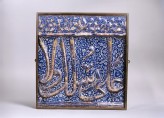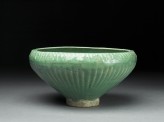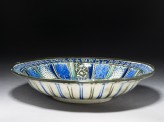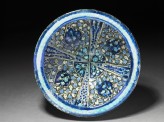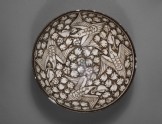Islamic Ceramics trail
Explore over one thousand years of development in Islamic ceramics through our extensive collection.
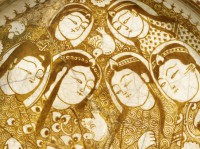
- This is a visual browsing tool that maps objects in this publication, gallery or collection trail by date of creation onto a timeline.
- The circular markers indicate where objects are on the timeline.
- The size of the markers indicates the relative number of objects at that point on the timeline.
- Hover over a marker to find out which objects are represented at that point in time.
- To expand, collapse or hide the timeline, click these symbols
 found at the top right of the timeline.
found at the top right of the timeline.
- 780
- 820
- 860
- 900
- 940
- 980
- 1020
- 1060
- 1100
- 1140
- 1180
- 1220
- 1260
- 1300
- 1340
- 1380
- 1420
- 1460
- 1500
- 1540
- 1580
- 1620
The Mongol invasions in the second quarter of the 13th century had a severe impact on manufacture and trade in the Middle East. Ceramics production in Iran, and probably Syria, was greatly disrupted, and only resumed fully in the second half of the century. By this time the establishment of Mongol rule had restored political stability, and had begun to develop extensive contacts and trade throughout Asia.
Decorative development
The pottery made in Iran from the second half of the 13th century, although following earlier traditions, is distinctive in its robust shapes and often sombre colouring. Far Eastern patterns, such as lotuses, dragons, and phoenixes, were copied from luxury goods traded to the Middle East and introduced in the decorative repertoire of all arts, including tiles and ceramic vessels. Lustre painting, which had thrived in Iran and Syria in the 12th and early-13th centuries, resumed with a new focus on the production of tiles.
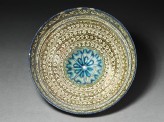 Bowl with vegetal decoration and central rosette (EA1978.1640)
Bowl with vegetal decoration and central rosette (EA1978.1640)
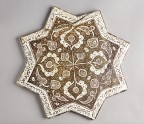 Star tile with vegetal and calligraphic decoration (EAX.289.a)
Star tile with vegetal and calligraphic decoration (EAX.289.a)
The technique of overglaze enamel painting carried on into the 14th century. Unlike minai ware, however, these later enamelled ceramics primarily featured geometric and vegetal decoration. This was often painted over a dark blue glaze which caused them to be known as lajvardina ware, from the Persian word lajvard (lapis lazuli).
At the same time, the import of Chinese greenware (commonly known as celadon) stimulated the production of a new category of vessels with moulded decoration under a monochrome glaze, which copied the shapes and patterns distinctive of the Chinese pieces.
Underglaze painting continued to flourish in Iran, Syria, and Egypt and a new concentric panel pattern became widely used. A distinct class of ware made in Iran, Sultanabad ware, is distinguished by a thick foliate pattern used in backgrounds, painted either in blue, turquoise, and black on white, or in white slip and black on a solid grey-brown background.
© 2013 University of Oxford - Ashmolean Museum


